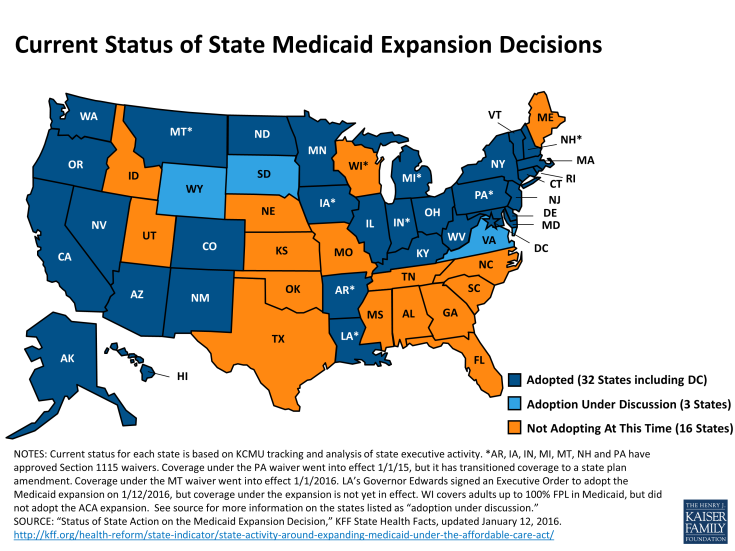
<p>President Barack Obama delivers a speech on education at Wakefield High School in Arlington, Va., Tuesday, Sept. 8, 2009. (AP Photo/Gerald Herbert)</p>
“Preschool for All” is surely a better tagline than “Preschool for 60 percent,” and “free college” sounds better than “free college (depending on where you live).” But those modified slogans might apply to upcoming programs if policymakers don’t carefully balance the tradeoffs inherent in policies that rely on voluntary state cooperation.
President Obama has pushed to expand universal access to education both before kindergarten and after high school, with his “Preschool for All” and free community college policy plans. But Obama’s proposals at both ends of the education pipeline rely on voluntary partnerships between states and the federal government—partnerships which, in an era of deeply polarized politics, may not materialize, likely leaving out upwards of 40 percent of the intended beneficiaries.
The types of state-federal partnerships envisioned in Obama’s proposals create incentives for states to expand access to early childhood and higher education. The preschool proposal works through a “cost sharing partnership” that requires participating states to meet certain quality benchmarks; the free-college plan “would create a new partnership with states to help them waive tuition in high-quality programs for responsible students.”
Recent experience shows that, even with incentives, state-federal partnerships can fail to reach large numbers of intended beneficiaries due to political opposition from states. The Affordable Care Act included provisions for states to expand their Medicaid programs, with the federal government picking up at least 90 percent of the cost. But 19 states have yet to expand their programs, largely due to opposition from Republican governors. Louisiana is a case in point, with the newly elected Democratic governor expanding Medicaid coverage on his second day in office, reversing his Republican predecessor’s refusal to participate. The decision brought Medicaid coverage to an estimated 298,000 uninsured adults.

How would these dynamics play out in education? Education may have broader bipartisan appeal than Obamacare, but the likely costs of new education programs to participating states are still unclear. As a thought experiment, we calculate how many four-year-olds (for preschool) and high school graduates (for college) would be excluded if the same states that opted out of Medicaid expansion also declined to participate in preschool and college partnerships.
We find that 40 percent of four-year olds and 37 percent of high school graduates live in states that have declined to expand Medicaid, and thus may be unlikely to participate in new federal education initiatives pushed by Democratic politicians. Non-participating states include three out of the six states without any statewide funding for preschool. They also include states that vary widely in their public college tuition levels.
If a Democrat wins the White House in 2016, she or he will almost surely continue Obama’s push for new state-federal partnerships for preschool and college. Hillary Clinton has already laid out a college plan that would provide federal grants to states that “step up and meet their obligation to invest in higher education by maintaining current levels of higher education funding and reinvesting over time.” Bernie Sanders has introduced legislation that would provide additional funding to states to eliminate tuition and fees at public colleges if they meet a number of requirements. Both candidates have announced intentions to make high-quality preschool available to all Americans.
These proposals will continue to face opposition in Congress, and recent debates have questioned whether they represent the best approach to improving early childhood and higher education. The main point of our analysis is that supporters of these policies need to consider whether a state-federal partnership model will ultimately leave out too many people and exacerbate existing educational inequalities.
In higher education, the federal government could tackle college affordability through existing programs, such as Pell Grants. Rather than provide money to states to reduce tuition, the Pell formula could be made more generous and extend further up the income distribution. The federal government could attempt to influence the behavior of colleges, such as the prices they charge, through eligibility requirements and other design features of Pell and other aid programs, such as student loans.
Early childhood education links more closely to K-12 education given the fact that preschool is increasingly offered in public schools. Since K-12 is funded primarily by state and local governments, with modest assistance from Washington, it is more difficult to imagine a fully federal policy in this context. One possibility would be to provide Pell-like subsidies that families could use to pay for preschools meeting certain quality criteria (with eligibility determined by the federal government). However, this would represent a significant shift away from the K-12 model, where the federal government only provides about 10 percent of funding.
Complicated tradeoffs are unavoidable in a system where education funding and governance are divided between federal, state, and local actors. In our view, policy discussions about new federal education programs need to carefully balance the tradeoff between creating incentives for states to contribute their own tax revenue and fulfilling the federal role of expanding opportunity for all Americans regardless of where they happen to live.
Let’s build a future where everyone, everywhere has the opportunity and power to thrive
Urban is more determined than ever to partner with changemakers to unlock opportunities that give people across the country a fair shot at reaching their fullest potential. Invest in Urban to power this type of work.